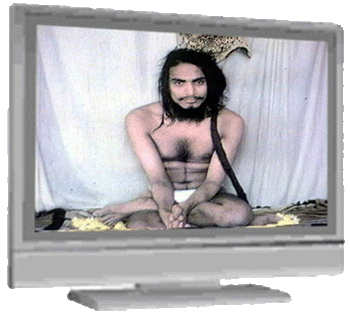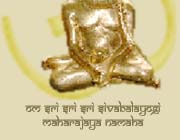About Shivabalayogi Videos

Over ninety edited videos have been posted to You Tube and Google Video that can also be accessed through this website.
To access a complete list of video edits available
online,
go to VIDEO.
About Video Recorded in India in the 1980’s
The videos on Shivabalayogi that are available online are precious. Most devotees have never had the opportunity to see these recordings as the availability of affordable cameras, televisions, and tape players is recent, particularly in India.
“The video cameras we used were rather basic and had no settings for day light or florescent light. To get proper color at night would have required expensive and specialized high wattage (1,000 watts or more) incandescent or halogen lamps. It was only later that cameras evolved that could record good quality video in ordinary night lighting.”
“Devotees kept recording on Swamiji’s insistence, although Swamiji would not arrange for new blank tapes. We had ask the program hosts for the money to buy tapes. Good tapes cost as much as 300 to 400 rupees each — which was a lot in the nineteen eighties. They would instead go and find the cheapest tapes in town. And, after all this, not many had the courage to go and ask Swamiji to let them watch the video; that is if the time was available. Remember the cassette player and the only colour television were in Swamiji’s room. Those who were rich enough to afford a video cassette player, would gather the courage to beg Swamiji for a copy. If Swamiji approved the copying, first the host had to arrange for a second tape for the copy and making copies was very difficult. We had to take the originals to the studios that had the equipment to copy video tapes and pay for the copying.”

Today, with digital, high definition camcorders and televisions, and broadband internet connections becoming increasingly available throughout the world, darshan of Shivabalayogi in this form is readily available. It is interesting to consider how Swamiji encouraged these videotape recordings and how carefully he hid and preserved them.
He had kept photographs, films, and video tapes in lockers for so many years that the devotees had almost forgotten that they existed. It was only a few months before he dropped his physical form that he brought them out. There were scores of photo albums with thousands of photographs of Swamiji, a couple of dozen films, scores of video tapes, and piles of papers. It was obvious that important photographs used in pamphlets and books had been removed from the albums and never replaced. Had Swamiji not locked up this material, irreplaceable records would have been ruined from poor equipment in dusty conditions, or simply lost.
Swamiji himself preserved them so they could be published and distributed for the devotees.
![]()



